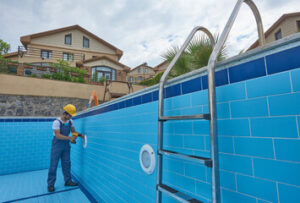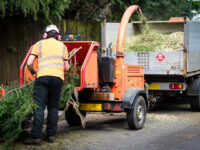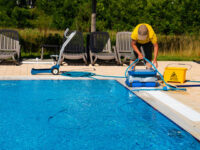How to Keep Your Pool Running Smoothly
Pools are great places to relax and enjoy the outdoors. But they require regular maintenance to keep them running smoothly. Whether you have an inground, above ground or Intex(r) pool, learning the basics of pool repair will help keep it clean and safe for everyone. And if it does break down, you’ll be prepared to tackle it without a professional.
 Pool Companies are available to help diagnose and repair any issues with your pool. They can provide various services, from basic repairs and maintenance to complete pool renovation and remodeling. By addressing any issues promptly, you can help extend the life of your pool and ensure that it remains safe and enjoyable for years to come.
Pool Companies are available to help diagnose and repair any issues with your pool. They can provide various services, from basic repairs and maintenance to complete pool renovation and remodeling. By addressing any issues promptly, you can help extend the life of your pool and ensure that it remains safe and enjoyable for years to come.
A pool leak can be an unsightly and expensive problem. Leaks waste water, damage equipment, and compromise the pool’s structural integrity. Leaks may also indicate that the pool is in need of repair. If a leak is found and repaired quickly, it can prevent additional water loss and damage to the pool and surrounding areas.
Identifying a leak requires careful inspection and troubleshooting of your pool and related plumbing. Common pool leak locations include the pump, main drain, and pool return. If you see air bubbles in the water when you turn on the pump, there’s a leak in the suction side of your filtration system. This could be a leaking pump lid o-ring, or it could be worn out seals around the pump, skimmer, and light fixture.
A leaking pool can be difficult to diagnose without a professional, so it’s important to get the ball rolling before it becomes too serious. Detecting a leak can be easy if you know where to look and how to troubleshoot.
If your pool liner has holes or tears in it, it’s important to repair them as soon as possible. If left untreated, these rips and tears can lead to water loss, damage to your pool’s foundation, soil erosion and other costly issues.
Some rips are minor, while others can be large and cause serious problems. If you’re not sure how big your rip is, it’s best to consult with a professional who can test your pool for leaks.
Several things can deteriorate your vinyl pool liner over time, including harsh ultraviolet rays and chemicals in your pool. Also, if you use hot ash or sparks from grilling, candles, tiki torches or fireworks, these can also create cracks in your pool liner.
Depending on the size of the tear, it’s possible to patch your pool liner. Usually, though, a rip that’s larger than 6 inches is too severe to patch. You may be better off replacing the entire liner if it’s damaged in numerous areas.
A pool filter traps and removes small particles from water, which helps keep your pool crystal clear and algae free. It does this by removing dirt, bacteria and other organic material from the pool water using a variety of filter mediums.
The type of filtration medium used by your filter will determine how well it performs and how much work you need to do to keep it clean. Filter media can be sand, cartridge or DE grids and each type has its own advantages and disadvantages.
Cartridge filters are a popular option for pool owners who don’t want to spend time backwashing their pool. These filters feature a simple two-piece tank (lid & bottom) that contains one or more cartridges.
Each cartridge has a fabric membrane that traps particles and debris. This filter medium can trap micron-sized contaminants, which allows them to remove impurities and other organic matter from the pool effectively.
A pool pump is the heart of the system, and without it, many features can’t work. A failure can be a major headache from salt cells to in-line chlorinators, gas heaters, and more.
It is important to regularly inspect your pump for leaks, broken or decayed seals, and unusual sounds. This can prevent expensive repairs and premature pump replacement.
If you are a DIY person with the right skills, you can often repair most of these problems on your own. However, if you aren’t confident or don’t have the appropriate tools, it is best to call in a professional.
Usually, when your pump doesn’t start, it’s not getting power. This can be a problem with your breaker box or the electrical connections leading to the pump.






